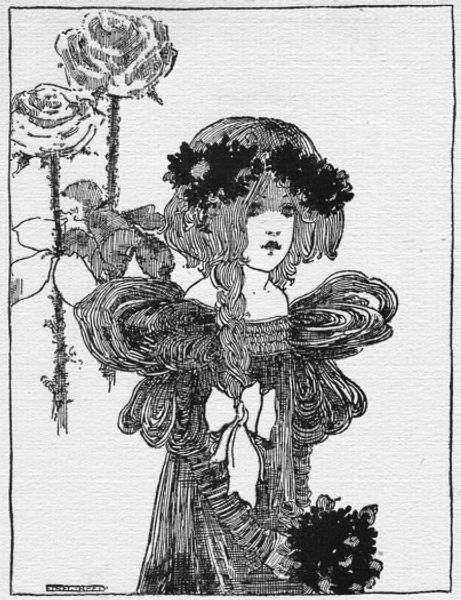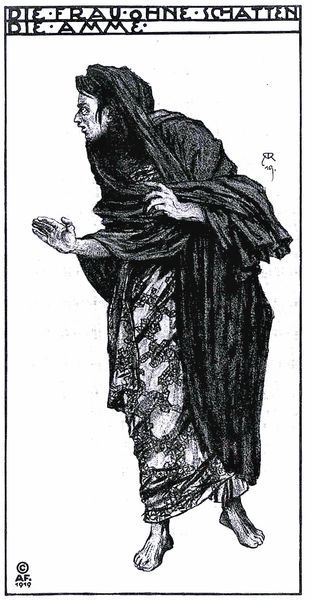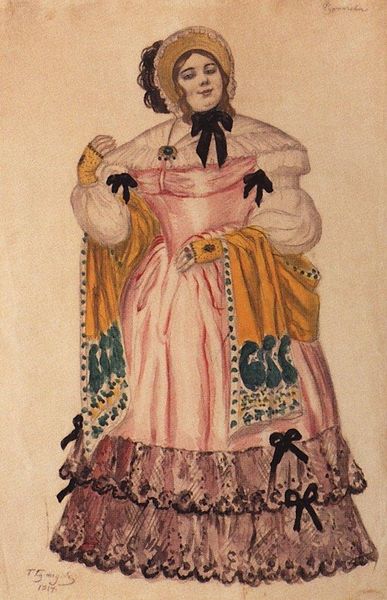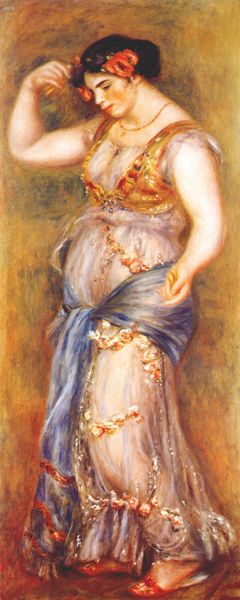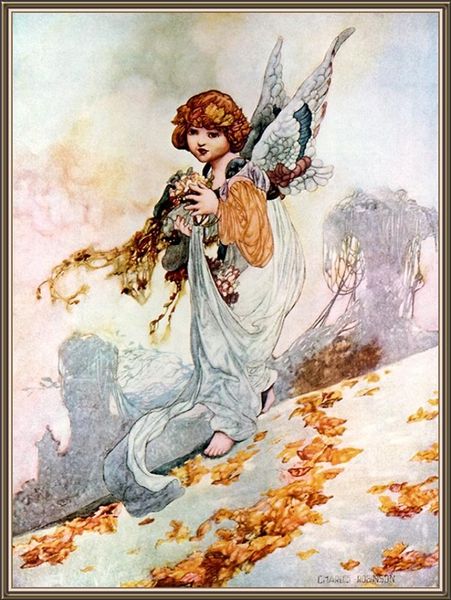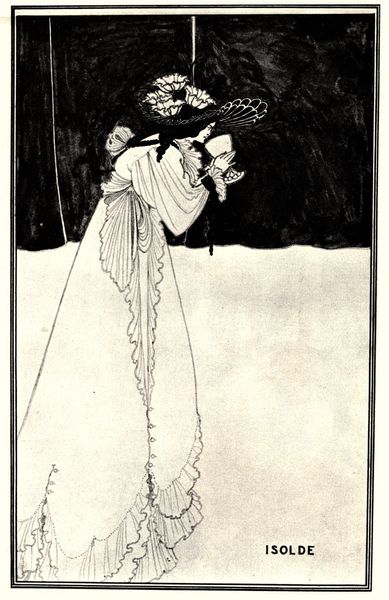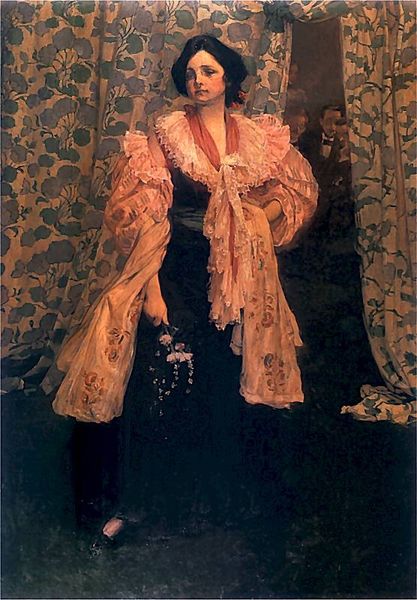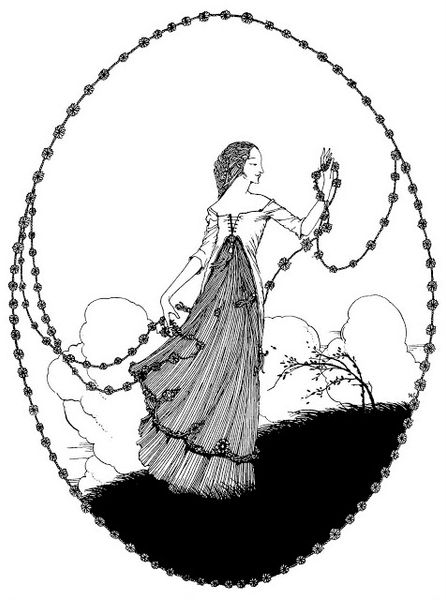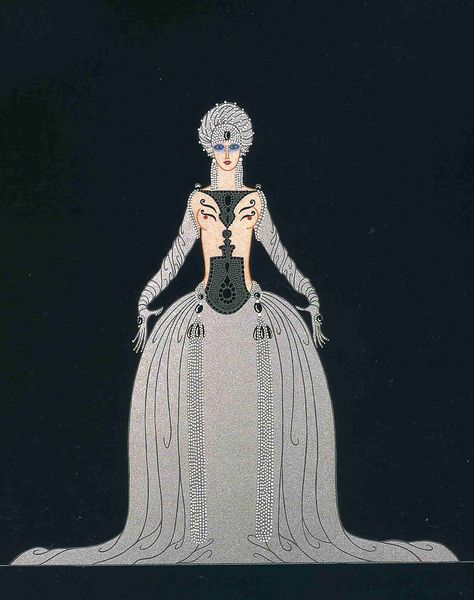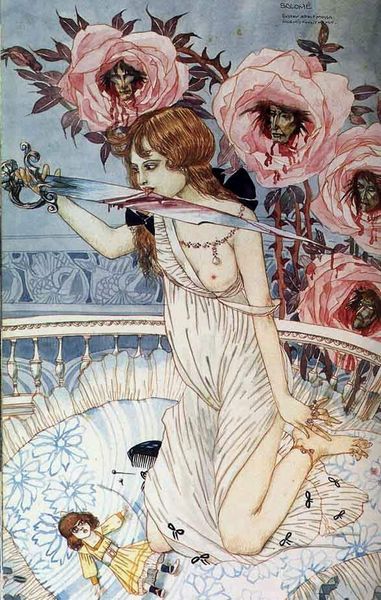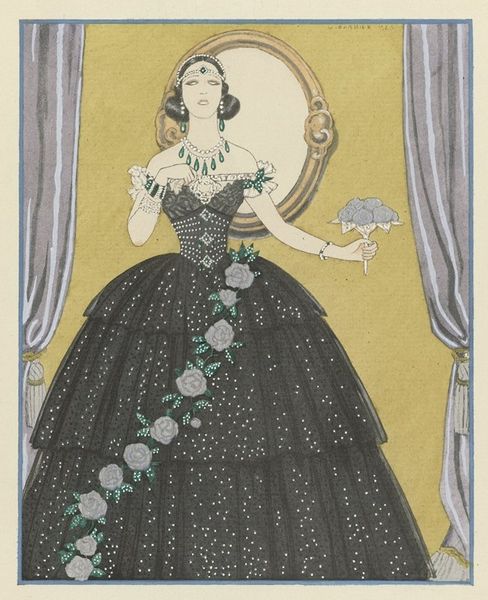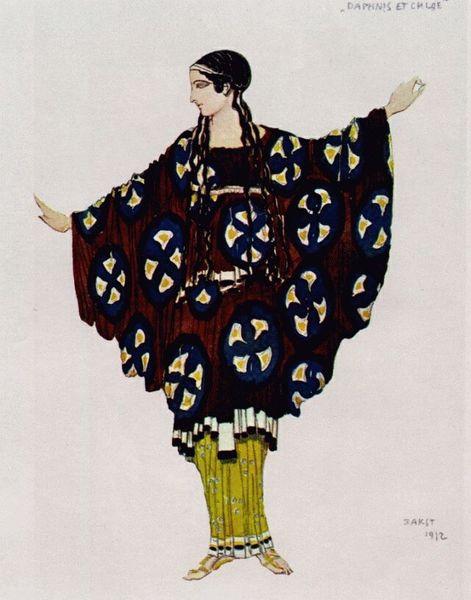
drawing, paper, ink
#
drawing
#
fantasy art
#
fantasy-art
#
paper
#
ink
#
sketch
#
costume
#
symbolism
Copyright: Public domain
Curator: Look at the delicate linework and vibrant colours of this drawing by Léon Bakst. It’s titled "Narcisse" - Nymph Echo, created in 1911. Bakst was known for his costume and set designs for the Ballets Russes. Editor: My first impression is one of theatrical melancholy. The figure's pose and flowing robe create a sense of graceful sadness, heightened by her pale, almost vacant, facial features. I’m drawn to the textures created by ink on paper. Curator: Costume design was integral to conveying character and narrative for the Ballets Russes. Here, the detailed rendering of the nymph's gown—all swirling blues and delicate embellishments—speak to Bakst’s meticulous artistry and how fashion became performative art on stage. But, importantly, remember the public controversies connected with the production. Editor: Absolutely. Let's not forget the historical context. Ballet Russes shows, though dazzling, faced criticism. They promoted exoticism and stereotypes, potentially shaping problematic perceptions of race and gender. How do we reconcile the aesthetic beauty with these critical, sociopolitical points? Curator: Precisely! Understanding art means confronting the difficult aspects. It asks us to consider the ballet's relationship to the orientalizing gaze and how those biases informed both its reception and production. How can we critically celebrate Bakst's artistry while still challenging the ballet’s colonial undertones? Editor: Exactly. By looking closer. Those glittering details almost obscure how the artist seemed to deliberately dehumanize the figure of Echo—a being who already, according to myth, faces a certain amount of dehumanization as the being can only repeat. It leaves me wondering about the power dynamics and whether Bakst consciously used the image to explore ideas about voicelessness and agency through costume. Curator: Ultimately, approaching this work responsibly demands engaging in this critical analysis, prompting questions about the portrayal of marginalised groups in art and performance and also more about the cultural landscape in which ballet participated and operated. Editor: Definitely food for thought. Seeing this artwork alongside those complexities really amplifies our awareness about art and social critique.
Comments
No comments
Be the first to comment and join the conversation on the ultimate creative platform.

